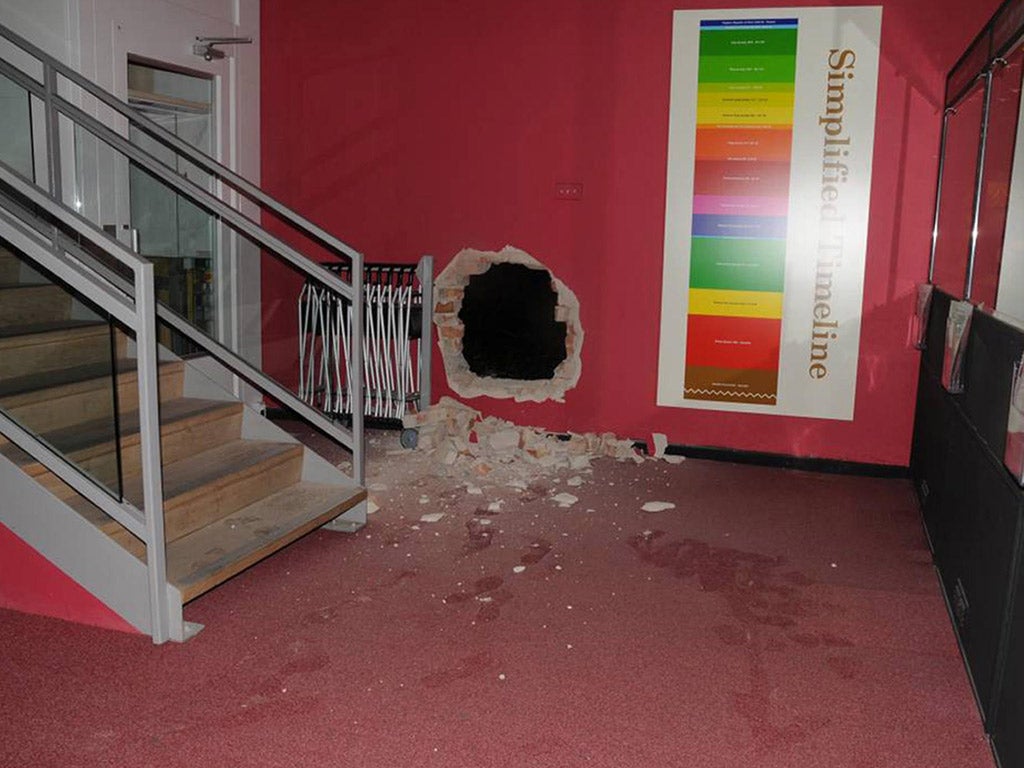The curious case of the vanishing treasures
As yet another museum is raided, Charlie Cooper investigates a black market boom for Chinese art

The thieves came only two and a half hours after closing time at Cambridge University's lavish museum last Friday night. They made off with 18 exquisite pieces of Chinese art: masterpieces in jade, jasper and bronze dating back to the 14th century and estimated to be worth millions of pounds.
On the same night, in a field a few miles south-west of Durham, police recovered a Qing Dynasty porcelain sculpture and a jade bowl dating from 1769 – artefacts worth a total of £2m that had been stolen in a similar incident at Durham University's Oriental Museum the week before.
The two robberies have not yet been linked by police, but they both point to one thing – a growing hunger in China for national art and antiques that is driving up prices in auction houses around the world, but also fuelling a growing black market in the nation's antiquities – many of which are housed in British museums and collections.
"Maybe these two thefts happening so close together is just coincidence," says William Webber of The Art Loss Register (ALR). "But last week there were some very, very strong sales of Chinese artefacts in the auction houses. People can see how sought-after these kinds of pieces are. There is a demand and people will do what they can to supply that demand."
The fashion for Chinese art has boomed in recent years, with a growing class of wealthy industrialists that is increasingly keen to own or invest in a piece of their nation's heritage. Earlier this month a rare, 900-year-old Chinese bowl from the Song dynasty broke all records for a piece of its kind when it sold for £16.8m at Sotheby's in Hong Kong. In 2010, an 18th century Chinese vase found in a small London house sold for £43m. Chinese ink paintings can now fetch as much as a Picasso.
A similar pattern can be seen in other emerging nations, Mr Webber said, with the price of Russian and Indian art also rising. And as demand drives up prices, inevitably some will try to capitalise by any means possible. "I believe that the pieces stolen are being taken to China," said Yangwen Zheng, a Qing dynasty specialist and historian at the University of Manchester. "The Chinese wealthy want them but don't want to pay millions. The rise of nationalism and wealth in China means these objects are in demand. These artefacts are a prized status symbol."
Police investigating the theft at the Oriental Museum in Durham found that the thieves used highly sophisticated techniques and probably knew which pieces to target. Detective Superintendent Adrian Green of Durham police described a "well-planned, highly organised break-in" in which thieves spent 40 minutes creating a hole in an outside wall before entering the museum and making for the Qing dynasty jade bowl and porcelain sculpture.
"I am sure this job had been planned for some time and I would think the artefacts have been stolen to order, for someone who has already identified a potential market," Det Supt Green said.
Police have arrested four men and one woman in connection with the Durham robbery, all of whom have been bailed until June. The artefacts were found undamaged in a field near Brandon, County Durham. Two other men, Adrian Mark Stanton, 32, and Lee Paul Wildman, 35, are being sought by police, who said more arrests were likely.
Details of the Cambridge theft have not yet been released, but the nature of the items stolen – mostly in jade and from the museum's permanent collection – suggests that the thieves also knew what they were after.
"These were small, portable pieces," said Mr Webber, whose organisation keeps a database of 350,000 lost or stolen pieces of art, antiques and collectables. "They could be put in a suitcase or some of them in a pocket even. They are of very high value, very portable and very saleable – the perfect objects to go for. Some research would have gone into that and they can be sold online very easily."
Dr Zheng anticipates that robberies targeting Britain's extensive collections of Asian artefacts will increase. Much of what is held in museums and collections came to Britain in the days of the Empire – sometimes by dubious means.
"There is a large collection of Chinese artefacts in the UK from legal and not so legal means," said Dr Zheng.
Bookmark popover
Removed from bookmarks